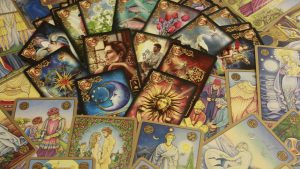Russian icons initially came to Russia in the late tenth century after acknowledging Christianity as their main form of faith. These icons have now become one of the most important creative ancient rarities the country is most proud of.
The Making of an Icon
To be considered an icon, it must follow the strict standards of the church and need to be purified and be blessed by a priest. These icons are ordinarily painted on wood with egg gum-based paint and featured with gold leaf.
Commonly they may contain a metal cover, known as an oklad or a riza, of plated or silvered metal exhibiting elaborate workmanship. They can also contain semiprecious or valuable stones. These days, this work of art is common in Russian homes and mostly in big cathedrals.
Around seventy-five percent of these ancient icons that are found today may have been created between the years 1800-1917. While twenty-three percent may have been made between the years 1700-1800. The last two per cent may have been made before 1700.
Icons are mostly classified into three categories: images of Christ, images of Mary, and images of different Saints. The value of an icon is also classified into five where they have to consider the age, size, quality, subject, and condition of the artwork.
Age. Russian icons that were made between the years 1350 to 1650 are considered valuable because of their age. However, it is important to note that not just because an artifact is old does not mean that they are going to be valuable, especially if they are just everyday pottery or ordinary bronze crucifixes because there is a lot of that type of artifacts even in Russia.
Quality. In Russian iconography, icons that were made in the city became more popular than those made in the provinces. This distinction of being produced in the city was mostly known if they were made from a certain school.
Size. When it comes to the value of an icon, the bigger it is, the more valuable it becomes. While there is no standard size with regards to these artworks, the most commons size for them are in the 12.5-inch x 10.5 inch.
Subject. Orthodoxy as Mother of God is one of the most popular types of Russian icons and is more considered valuable than any other saints. Icons which mostly portray subjects of real church Feast days are also popular and expensive. Popular saints are also in demand while rare pieces can have a more expensive tag.
Condition. Comparing to other art forms, a more seasoned Russian icon will show wear and tear to acknowledge their age and this is acceptable and will not impact its value. Nonetheless, icons that are in superb condition without question are considered more valuable than the icons in a lesser state.
Andre Ruzhnikov is a celebrated art and antique dealer with more than four decades of experience in the international art market. He offers a personalized service for his clients from acquisition to sale, restoration, appraisal, and insurance. Visit his site at Ruzhnikov and get to view his rare collection of Russian Icons, Antique Silver, Objets de Vertu, and more.



